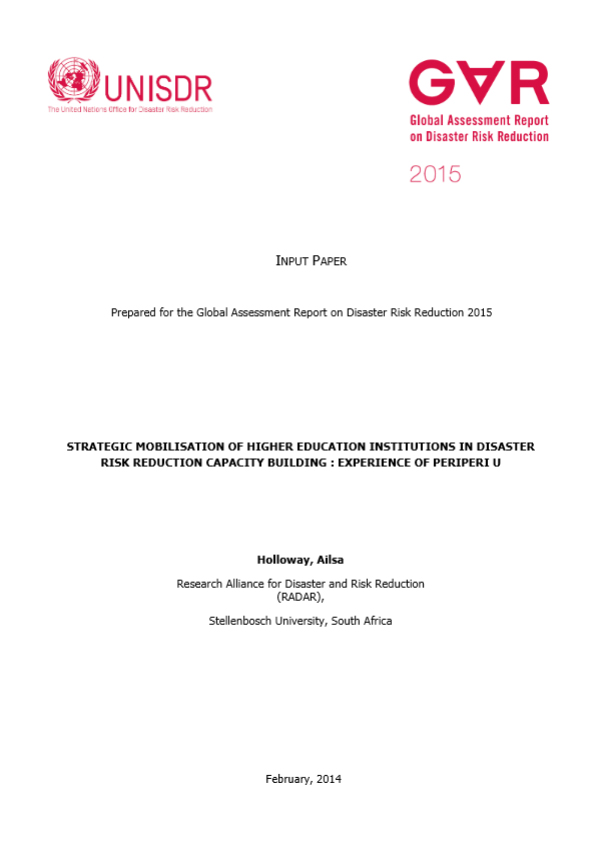This background paper’s focus on the role of higher education institutions in advancing disaster risk reduction is underpinned by a growing recognition that a well-educated population is a prerequisite for a “productive, prosperous and resilient country” (Group of Eight, 2013). It also reflects awareness that disaster risk-related higher education is essential for promoting a culture of prevention and is directly applicable to a wide range of disciplines and sectors (including agriculture, business studies, education, environmental management, engineering, public health, urban planning, public administration and governance,).
Specifically, higher education institutions (HEIs) play crucial roles in advancing skilled human capacity in the disaster risk domain and supporting disaster risk research and policy at all scales. This is especially the case for those HEIs located in developing countries where their core mission includes public engagement to advance national development goals (Koehn, 2013). But, it equally applies to all societies facing disaster risks and where rapidly growing and more concentrated populations continue to expose more people to multiple threats.
